Virtual telephony is rapidly becoming the top choice for numerous businesses because of its cost-effectiveness and comprehensive functionality. In this article, we will be comparing two prominent business communication providers for companies: Omnivoice and Grasshopper.
Both platforms offer VoIP services, yet each has its strengths and weaknesses. In this analysis, we’ll take a deeper look into each platform to determine the most suitable option for your business.
Capabilities Comparison: Omnivoice vs. Grasshopper
| Capabilities | Omnivoice’s Team Plan | Grasshopper’s Solo Plus |
|---|---|---|
| Price per month | $19 | $28 |
| User extensions | 3 included | 3 included |
| Minutes Included | 5,000 | Unlimited |
| Local or Toll-free numbers | 2 | 1 |
| Existing number transfer | Yes, for free | Yes, for free |
| Vanity number | Yes, for free | Yes, with some plans |
| Texting | Yes, $5 per month | Yes, unlimited (up to 2000 due to fair use) for $1.50-$2/month |
| Contact book | Yes | Yes |
| Business hours | Yes | Yes |
| Call forwarding | Yes | Yes |
| Call queue | Yes | No |
| Ring groups | Yes | No |
| Call log | Yes | Incomplete (basic call history) |
| Voicemail | Yes | Yes |
| Voice-to-text transcription | Yes, for free | Extra charge |
| Mini-CRM functionality | Yes, for free | No |
| IVR | Yes, multi-level | Basic IVR |
| Call recording | Yes, for free | No |
| Conference calling | Yes, for free | Available |
| Music on hold | Yes | No |
| e911 | Yes | Not Specified |
| Mobile app | iOS | Android | Yes |
What Can You Expect From Each Platform:
Omnivoice: Omnivoice stands out when it comes to continuous innovation and advanced functionality. The service is known for its regular updates and enhancements, ensuring businesses have access to the latest features and the most seamless experience possible.
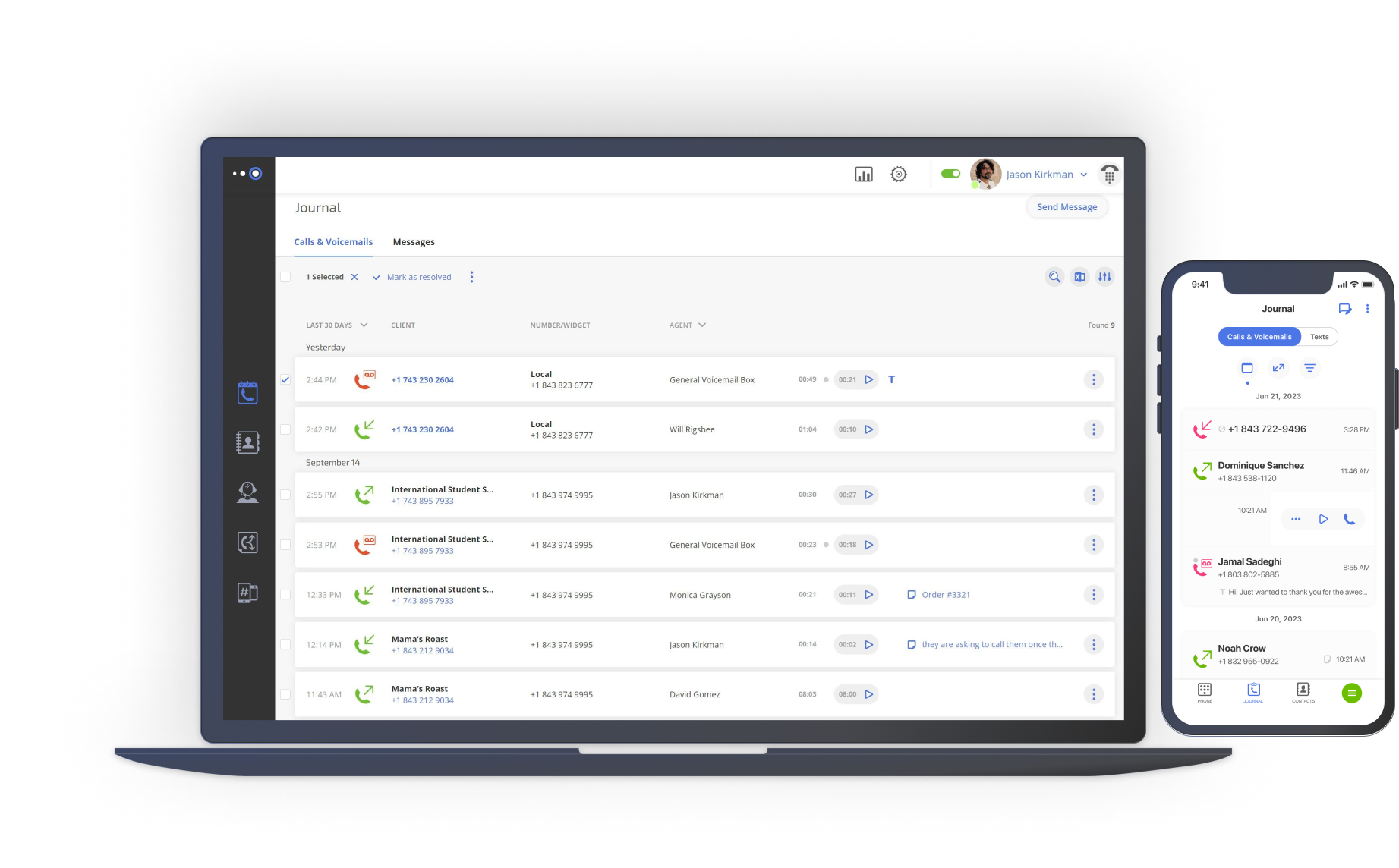
Furthermore, Omnivoice offers a more sophisticated range of functionalities that are not only powerful but also user-friendly, designed to meet the dynamic needs of modern businesses. Importantly, Omnivoice adopts a transparent pricing model, with no hidden fees or ‘extra charges.’ This approach, combined with its competitive pricing, positions Omnivoice as a particularly cost-effective solution for businesses seeking advanced call features without breaking the bank.
Grasshopper: In contrast, Grasshopper seems to have plateaued in terms of product development, with users noting a significant lack of recent updates or new features.
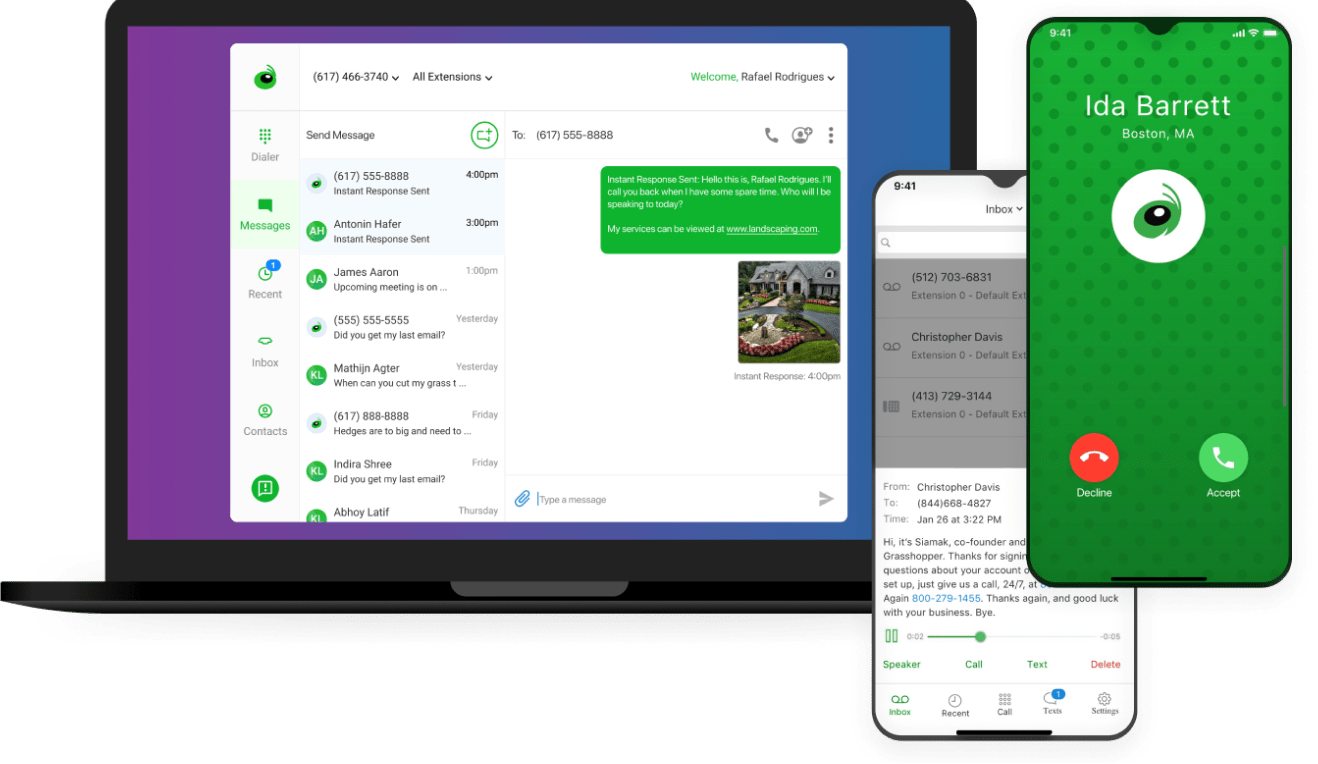
While the platform provides a solid basic service, it doesn’t match the advanced functionality offered by competitors like Omnivoice. This stagnation can be a drawback for businesses looking for a service that evolves with their growing needs. Additionally, certain features come with additional costs, which can lead to a higher total cost of ownership for the service. Despite its user-friendly design, Grasshopper’s lack of progressive development and extra charges might not suit businesses needing a cutting-edge communication system.
Ease of Setup and Use:
Omnivoice: Omnivoice provides a straightforward setup process, ensuring businesses can get started with minimal hassle. Its intuitive user interface and online tutorials make it easy for teams to understand and utilize the platform’s full range of features.
Grasshopper: Grasshopper is also user-friendly, designed for businesses to set up and begin using without requiring technical expertise. With the smaller amount of features it requires less effort to set up.
Calling Features
Omnivoice: One of Omnivoice’s strengths is its comprehensive suite of calling features. The platform includes a call queue functionality, supports ring groups, and offers complimentary voice-to-text transcription, contrasting with Grasshopper, which charges extra for this service.
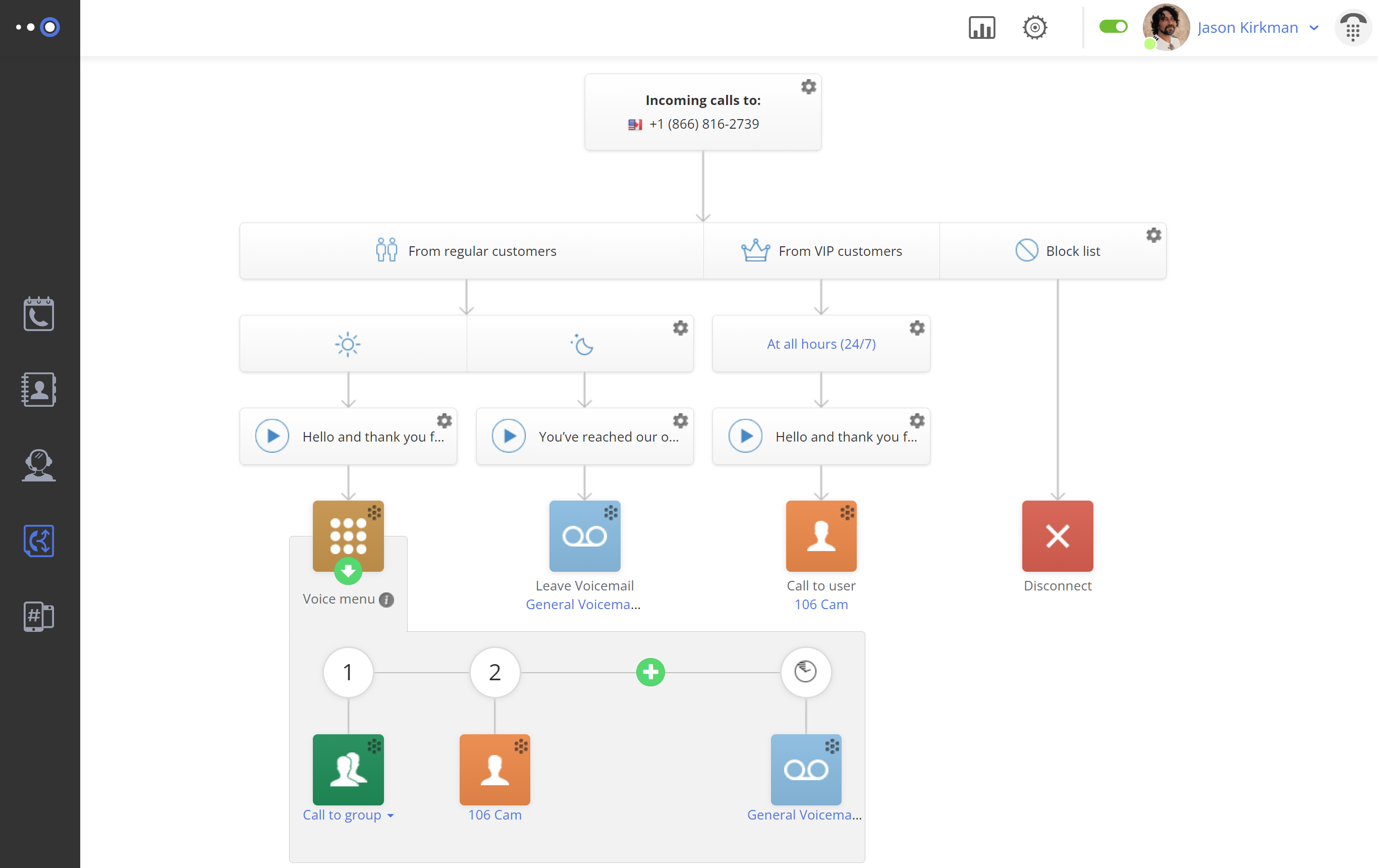
Omnivoice integrates basic CRM functionality at no additional cost, enabling businesses to maintain detailed client communication records efficiently.
Omnivoice also provides free call recording, a critical feature for quality control and legal compliance that Grasshopper doesn’t offer. Lastly, Omnivoice enhances the customer call experience with the music on hold feature, allowing businesses to engage callers positively during wait times, a feature absent in Grasshopper’s offerings.
Grasshopper: While Grasshopper maintains a set of essential calling features suitable for small businesses or startups, it lacks several advanced functionalities present in Omnivoice. Notable omissions include the absence of a call queue for managing incoming calls during high traffic, no support for ring groups, and the additional cost for voice-to-text transcription services. Moreover, Grasshopper doesn’t provide any CRM features, which are becoming increasingly important for customer-centric businesses. Its IVR system, though present, only supports basic functions and lacks the multi-level structure that Omnivoice boasts. Additionally, the absence of call recording and music on hold features indicates that Grasshopper may not meet the needs of businesses looking for a comprehensive telephony solution, particularly those that prioritize customer experience and efficient call management.
Call Logs & Utility:
Omnivoice: Omnivoice offers an in-depth call log system that not only records the basic information such as the time, date, and duration of each call but also integrates this feature with its analytical tools. This allows businesses to track their call volumes, assess the efficiency of communication, and identify any patterns or issues that need attention. You can export, add notes, and see the caller ID.
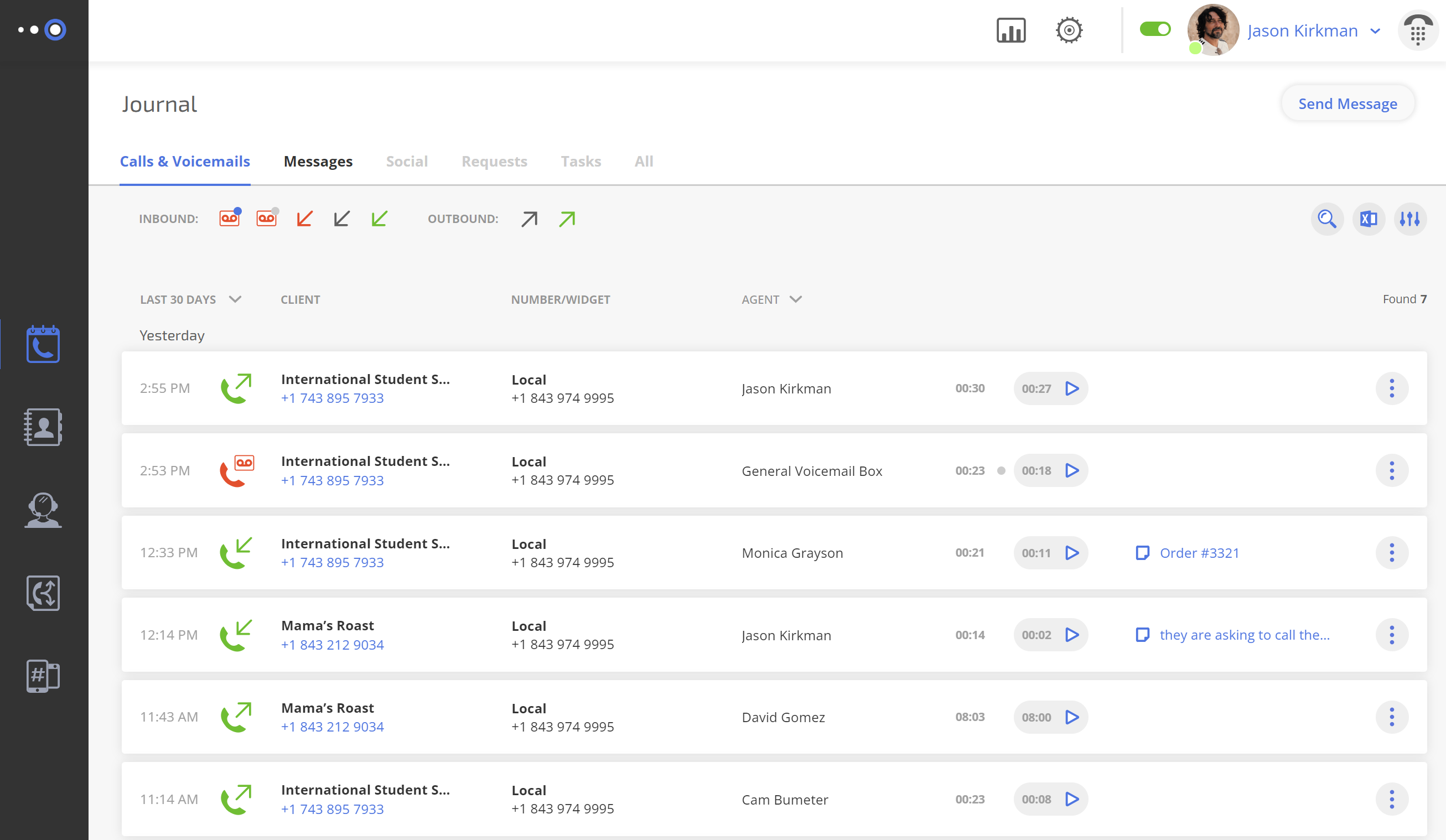
Grasshopper: Grasshopper provides a more basic approach to call logging. While it does maintain a record of the history of calls, indicating the time, date, and duration, the details tend to be less comprehensive compared to Omnivoice. The platform lacks an integrated analytical system tied to its call logs, meaning businesses might find it challenging to perform a detailed analysis of their telecommunications. This level of logging is suitable for entities that require just an overview of their call history without the need for an in-depth analysis or integration with other business tools. However, for a growing business or one with high call volumes, the lack of detailed analytics and reporting in call logs might be a limitation.
Privacy and Security:
Omnivoice:
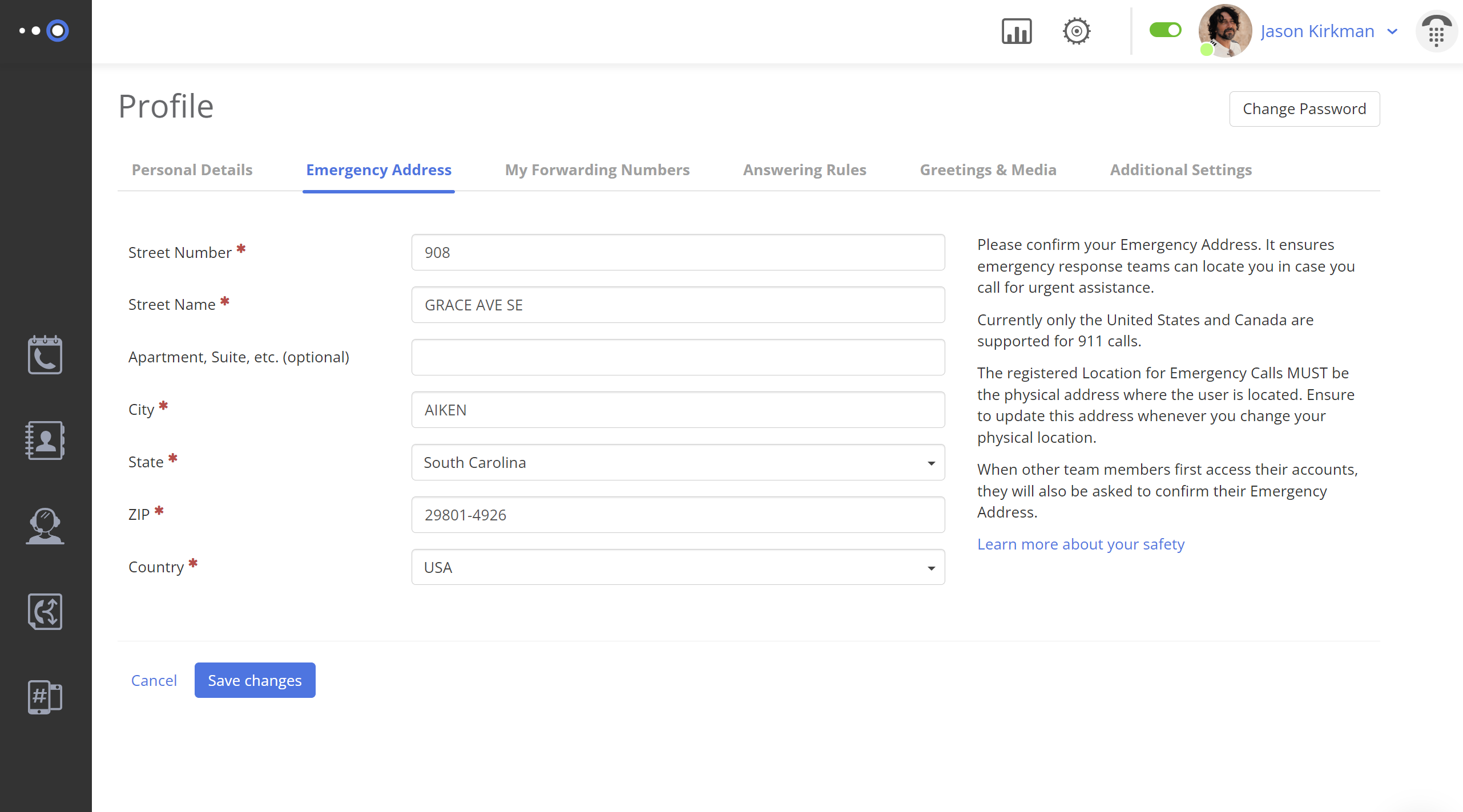
- e911 Integration: Omnivoice recognizes the critical importance of emergency services and incorporates e911 functionality, making sure you and your team are safe at all times, including emergency situations. In order to use Omnivoice, you will first have to enter your and your employees’ current work addresses, so in case an emergency occurs, these details will be immediately shared with the 911 operators.
- STIR/SHAKEN Verification: To reduce spam or malicious calls, Omnivoice has implemented STIR/SHAKEN verification, meaning that it will be highly unlikely for you to receive fraud calls with Omnivoice.
- Data Encryption & Privacy: Omnivoice encrypts all customer data and maintains a strict privacy policy, ensuring no data sharing with third parties.
Grasshopper:
- e911 Integration: Grasshopper does not offer the e911 service.
- STIR/SHAKEN Verification: Grasshopper does not mention having the STIR/SHAKEN verification.
- Data Encryption & Privacy: Grasshopper does not encrypt your data, which makes it easier to be accessed by third parties. According to its privacy policy, Grasshopper does not share your data with third parties.
Which Service Should You Choose?
For businesses that require a comprehensive communications solution with advanced features and the potential for scalability, Omnivoice might be the preferred choice. It should also be the preferred choice if you value your security and privacy, as Omnivoice implements better measures to protect you and your data. On the other hand, if you’re a small business or startup aiming to project a more prominent business image without the need for anything but a basic calling mechanism, Grasshopper could be the right fit.
Choose based on the unique needs and growth trajectory of your business. Both platforms offer significant advantages; it’s all about aligning with your specific requirements.
FAST • SECURE • RELIABLE
business communications

